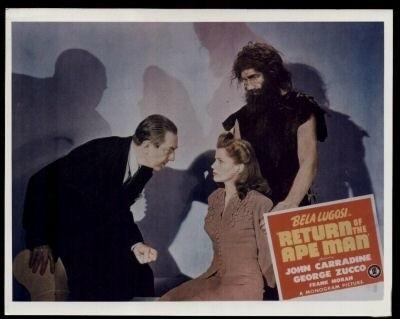If you’re a hardcore action movie aficionado, you probably
compared “Lockout” with John Carpenter’s vintage sci-fi epic “Escape from L.A.” the first time that you watched the lively little trailer. The last actor that I thought would appear in
this entertaining but disposable piece of fodder is Guy Pearce. Typically, the English-born Pearce appears in
prestigious upscale films, such as “Memento,” “The King’s Speech,” “The Hurt
Locker,” “The Count of Monte Cristo,” “L.A. Confidential," and Ridley
Scott’s forthcoming “Alien” prequel “Prometheus.” “Lockout” looks out of place in Pearce’s
filmography so perhaps he was slumming for a fast paycheck. Rookie writer/directors James Mather and
Stephen St. Ledger along with prolific French film producer Luc Besson have
done some creative cherry picking for “Lockout.” Indeed, the premise about a rugged, lone wolf
hero sent into a hostile environment to rescue the daughter of a U.S. President
has all the earmarks of “Escape from L.A." This time the setting is a
maximum security prison in orbit rather than the island of Los Angeles.
This sounds like the Geoff Murphy sci-fi thriller “Fortress 2 Re-entry”
(2000) with Christopher Lambert serving time in a futuristic state-of-the-art maximum security prison orbiting 26-thousand miles above the Earth. No way is
anybody getting out of this place without becoming a satellite. Anybody who hasn’t seen either of these movies
will probably compare “Lockout” to the Bruce Willis “Die Hard” franchise. Mind you, Besson is probably the brain child
behind most of this exciting nonsense since he wrote “La Femme Nikita,” “The
Transporter” franchise, both “Taken” as well as “Taken 2,” and “The Fifth
Element.”
Like “Escape from L.A.,” “Lockout” takes place in the
future. Yes, this is another dystopian
future. Nevertheless, some things don’t change. America still has prisons, but the biggest
and the worst is no longer on terra firma but instead orbits the Earth. Furthermore, the prisoners are held in suspended
animation stasis. The adult daughter of
the U.S. President Warnock, Emilie (Maggie Grace of “The Twilight Saga:
Breaking Dawn - Part 1”), is on a goodwill mission to M.S. One. Actually, she is there to investigate
allegations that nefarious experiments are being performed on the inmates. No sooner has Emilie arrived than the inmates
stage a breakout. One of Emilie’s overzealous
Secret Service agents decides that surrendering his entire arsenal of firearms will
make him feel naked so he keeps a gun strapped to his ankle. During Emilie’s interview with a particularly
disturbing inmate, Hydell (Joseph Gilgun of “Harry Brown”), the convict gets into a scuffle
with the Secret Service agent and swipes his ankle pistol. Initially, Hydell and his older brother Alex
(Vincent Regan of “Troy”) have no idea that Emilie is the President’s daughter.
Meanwhile, back on Earth, a wisecracking former CIA agent
named Snow (Guy Pearce of "The Proposition") is up to his ears in his
own woes. Not only has he lost an important suitcase that contains secret
information, but he has also been caught and charged with the murder of his
best friend as well as treason. The authorities decide Snow is the ideal
candidate to blast off into space and rescue the President's daughter. Of
course, Snow isn't exactly enamored of the idea so he qualifies as a reluctant
hero. Once he arrives aboard M.S. One, he finds himself in a murky maze with
everybody, including the President's daughter, trying to kill him. After she
realizes who Snow is, Emilie and he stick together like glue but constantly
bicker. While Snow and Emilie are fleeing from Alex and his insane brother
Hydell--who regards everybody else as a potential casualty, our heroes rely on
aid from the outside in the form of Shaw (Lennie James of
"Columbiana") who knows Snow. Shaw possesses blueprints of the space
prison and can advise Snow where to go to elude the inmates. Shaw and Snow have
an underlying relationship that relates to the missing suitcase. It seems the
man who last had the suitcase, Mace (Tim Plester of "Dr. Who: A Christmas
Carol"), is the only one who knows about its location. Unfortunately,
since he has only recently been released from stasis, he has trouble
verbalizing his thoughts.
“Lockout” is the kind of runaway thriller where
complications keep complicating everything.
Mind you, this is a derivative movie in the sense that you’ve seen
everything here before. No matter what happens, Besson and first time
helmers Mather and St. Ledger keep throwing obstacles in the path of our hero
and heroine. The villains are
treacherous and take lives without a qualm.
In fact, actor Joseph Gilgun bears an amazing resemblance to Robert De
Niro in his early Martin Scorsese movies “Mean Streets” and “Taxi Driver.” The setting is appropriately grubby a la “Outland.” Interestingly, Guy Pearce is playing the kind
of role that Arnold Schwarzenegger would have done back in 1984. Like James Bond, Schwarzenegger acquired the
habit of uttering a clever one-liner whenever he found himself in a tight
predicament. Pearce’s Snow behaves in
similar fashion. Some of the lines that
he utters are humorous. Maggie Grace and
he seem appropriately paired despite the circumstances surrounding their
coupling. Clocking in at a trim,
vigorous 95 minutes, “Lockout” looks a little rough around the edges but it delivers
every cliché intact with more than enough style to make it worth watching.










